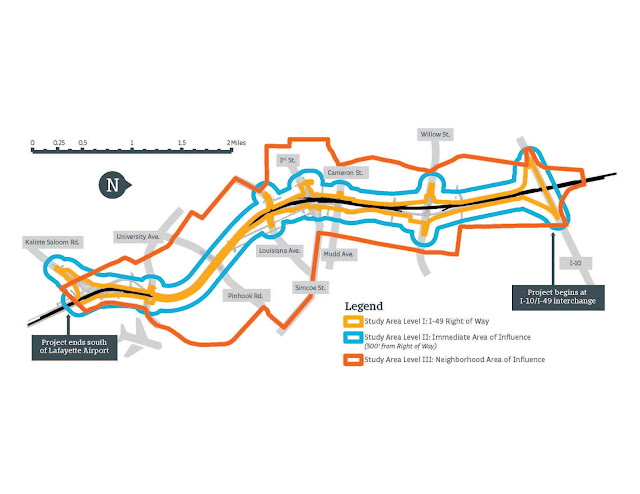The following Letter to the Editor appeared in the The Advocate on August 11, 2020.
So many reasons to forsake I-49 project, so why would we risk this?
Once again, the Department of Transportation and Development is attempting to move forward with the Lafayette Interstate 49 Connector project. The Connector is unlikely to ever become a reality for the following reasons:
The project lacks public support and has been opposed for over 30 years by hundreds of citizens and the victims who will lose their homes, jobs, businesses, churches and other community assets. This opposition has been well-voiced in public hearings, meetings and lawsuits.
It has an overabundance of prohibitively expensive problems due to its proximity to the railroad, downtown Lafayette and the airport. These issues bring the price to at least $300 million to 400 million per mile, which far exceeds the normal funding for interstate highways.
The path of this highway takes it through the abandoned, highly contaminated Union Pacific rail yard. It has been declared so by the Environmental Protection Agency, Department of Environmental Quality and federal courts. Litigation seeks to hold Union Pacific accountable for the cleanup. This suit and the clean-up must be completed before the connector can be built.
Its cost could be as much as $2 billion and could take decades to complete. Louisiana DOTD attorneys declared in the federal citizens’ suit against the project that the proposed pathway for the connector is the only feasible route, which was upheld by the court’s ruling. This creates a Catch-22 whereby more cost-effective routes are not considered.
The footprint of the proposed connector lies above the Chicot aquifer, Lafayette’s water source. Contamination has already been observed in our aquifer. Driving elevated roadway pilings through the rail yard and into our aquifer without a thorough cleanup would endanger our precious water supply.
The 20-year-old Environmental Impact Study required by federal law is significantly outdated, far exceeding the three-year life of an EIS. The attempt to supplement this outdated EIS is a waste of time and money. A new EIS is required because of passage of time, new significant environmental information and major changes in the Record of Decision, all of which apply to this project.
We are outraged that the DOTD continues to spend millions in taxpayer money on a project that is too expensive, destroys community, jobs, homes and businesses, reduces property tax revenue, increases traffic on city streets, and endangers drinking water, air quality and Bayou Vermilion. The public has been wise in opposing this project for the past 30 years.
When confronted with public opposition, engineering obstacles and high cost, other states have revised planned interstate corridors and created urban bypasses. Why not in Lafayette?
HAROLD SCHOEFFLER
chairman, Acadian Group, Sierra Club
Lafayette


